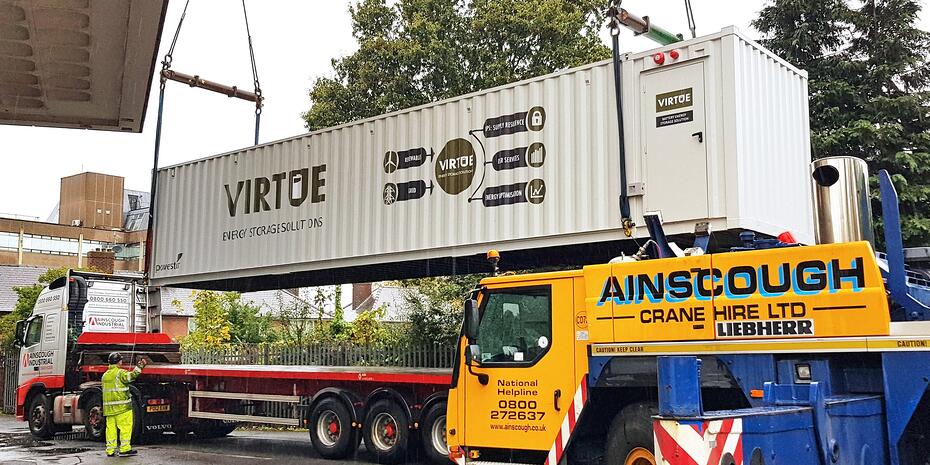
Although we are witnessing maturity in digital transformation along with the economy, many retailers still struggle with a familiar challenge. Fragmented data systems, legacy architectures, and siloed insights are some of them. Customers of the modern era expect nothing short of seamless, omnichannel experiences, be it browsing online, shopping in-store, or interacting through apps and loyalty programs.
However, for the mass UK retailers, delivering a unified, personalized experience remains elusive. Such customer data remains scattered across ERP systems, e-commerce platforms, CRM databases, and analytics warehouses that do not “communicate” with each other. Thus, we often experience a fractured view of the customer. It becomes an obstacle that limits personalization, weakens loyalty, and curbs business agility. Responding to this challenge, enterprises should transform traditional data warehousing into a customer-centric platform. It should integrate a Customer Data Platform (CDP) and self-service customer portals. Various enterprises like VE3 offer state-of-the-art solutions and cutting-edge customer data management mechanisms powered by AI and security to build a sustainable business.
This article offers a complete guide to Customer Data Platforms (CDPs). It explains how a fragmented data landscape in the UK retail sector can distort analytics and prevent businesses from truly understanding their customers. We will also understand the importance of unification for the enterprise to run smoothly. Then, we will dive into architectural evolution to understand the contrast between traditional data warehouses and modern unified stacks, including analytics lakehouses, real-time ingestion, and CDP activation.
Understanding the Need for Customer Data Platforms (CDPs)
In today’s highly competitive UK retail business landscape, customer expectations have evolved beyond simple transactions. They demand personalized, consistent, and connected experiences across every touchpoint. To strengthen data-privacy requirements and address the decline of third-party cookies, UK retailers are reevaluating how to connect customer-centric marketing and commerce data. Again, we often see retailers struggle with fragmented customer data disassembled across multiple technologies & enterprise systems, such as Customer Relationship Management(CRM) Point of Sale (POS) systems, e-commerce platforms, and marketing automation tools. This fragmentation prevents businesses from obtaining a single, unified view of the customer, making it difficult to deliver relevant and timely engagements. Traditional data warehouses and analytics platforms are excellent for historical reporting; they lack the agility and real-time capabilities needed to manage dynamic customer interactions or power personalized experiences.
Customer Data Platforms (CDPs) address this gap by unifying customer data from multiple sources into a central, accessible profile, enabling us to take a 360-degree view of each customer and their respective requirements. CDPs can integrate structured and unstructured data, perform identity resolution, and activate insights across marketing, sales, and service channels in real time. CDPs also act as a connecting layer between data warehouses and user-facing solutions and services, as a customer-centric platform. CDPs transform fragmented data into intelligence, helping us strengthen our retailers to create stronger customer relationships, improve retention, and drive revenue through data-driven personalization at scale. For UK retailers, leveraging CDPs and automated customer analytics portals means being able to identify high-value customers, predict buying intent, personalize offers, while maintaining data compliance.
UK's Retail Market: Challenges of Fragmented Data Landscape
We are going through a modern retail ecosystem where data is the lifeblood of customer engagement, operational efficiency, and business intelligence. According to the historical trends, the UK retailers have long invested in enterprise data warehouses for reporting and BI. However, most retail firms continue to operate within a fragmented data landscape. We, as retailers, face fragmented data problems because the information remains scattered across multiple disconnected systems. Legacy systems compound this problem. E-commerce platforms, CRM databases, POS systems, marketing automation tools, and supply chain software each hold pieces of the customer and operational puzzle, but these systems rarely communicate seamlessly.
That makes it harder for us to unify customer experiences or generate holistic business insights. Enterprises across various nations have built traditional data warehouses for reporting and not for omnichannel personalization or real-time analytics. In today’s hyper-competitive and hyper-personalized retail market, not delivering adequate value to customers can hamper your business’s growth in the long run. That is where a unified customer data platform is essential. Without that, the challenges the UK’s retail market faces are:
- Inconsistent customer profile
- Low or no personalization capabilities
- Data silos across departments
- Inaccurate analytics leads to loss in businesses
- Compliance and governance risks
- Delayed customer Insights
- Operational (sales and marketing) inefficiencies
Why Data Unification Matters?
Anything, be it data, managing employees, or day-to-day operations, when organized under one umbrella, can help us gain a 360-degree understanding. Data unification also has certain benefits. These are:
1. Unified intelligence
Data unification isn’t just a technical upgrade; we can utilize it as a strategic imperative. By linking traditional data warehouses with modern CDPs and customer engagement portals, we can unify retailers’ digital systems with every customer signal, such as purchases, interactions, preferences, and behaviors — all under a single, actionable profile.
2. Personalization at scale
If we accumulate and store all data in a centralized repository with easy accessibility and automated analytics support, we can empower personalization at every touchpoint. Retailers can recommend products based on past purchases and browsing behavior, personalize emails and app notifications in real-time, and suggest nearby physical stores depending on preferences.
3. Advanced analytics through segmentation
We can perform advanced analytics and reasoning by unifying data first and then creating dynamic segmentation. It helps retailers understand customers from different dimensions while creating real-time cohorts based on live events (like cart abandonment, product interest, or seasonal preference). Through segmentation, UK retailers can predict region-wise market demand, identify high-value segments, and design precision campaigns.
Architectural Evolution – From Traditional Data Warehouses to Modern Unified Data Stacks
Over the past few decades, we have seen retail businesses relying on traditional data warehouses paired with BI (Business Intelligence) tools to analyze historical data, generate reports, and support decision-making. They are excellent for structured data and batch-wise processing of input data. Earlier, businesses had to extract, transform, and load data from diverse sources like POS systems, ERP, CRM, and e-commerce platforms, often only updated daily or weekly. It helped us in dealing with static reporting and financial warehousing, but lacks flexibility, struggles with unstructured or semi-structured data, and cannot support real-time personalization or customer engagement.
To overcome all these limitations, retailers are shifting towards a modern, unified data architecture built on pillars such as:
- Analytics lakehouse
- Real-time data ingestion and
- CDP-based granular & dynamic data analytics
Lakehouse architecture is a unified data stack that combines the strengths of data lakes – enabling scalability and all-inclusive data type support with efficient data querying. Some of the well-known platforms businesses are using these days are Snowflake, Databricks, Google BigQuery, and Azure Synapse, which enable retailers to store transactional, behavioral, loyalty, and click-stream data in a centralized, on-demand, scalable environment.
Benefits of Technology Enablers
Developed nations, such as the UK, need to establish a robust, customer-centric ecosystem for their retail businesses. Depending on legacy technologies can provide blurry customer insights. Therefore, using an accurate set of technologies, retail firms can unify data, make it actionable, and support scalable growth. To build such a unified, intelligent, and hyper-personalized system for the retail businesses, the enterprise should focus on creating pillars such as identity resolution, real-time streaming, cloud data platforms, AI-powered analytics, and warehouse-native/hybrid CDPs.
1. Identity Resolution
It sits at the heart of the success of customer-centric data platforms. In retail, a single customer may appear under multiple identifiers. These are email, loyalty database, cookies, app account, or in-store transactions. With deterministic (exact match) and probabilistic (behavioral and pattern-based) techniques, identity resolution can merge these fragmented identities under one system, enabling brands to understand customers’ behavior across web, mobile, in-store, and social channels.
2. Real-time streaming
It enables retailers to process users’ actions across various systems and delivers cross-platform data streaming on movements such as product view, cart abandonment, purchase, or return. These details help retailers initiate actions such as personalized recommendations, dynamic pricing, fraud alerts, or loyalty notifications.
3. Cloud Data Platforms
These platforms (Snowflake, Google BigQuery, Databricks, and Azure Synapse) provide a scalable backbone for unified data storage and analytics. With these platforms, we can handle structured, semi-structured, and unstructured data while offering elastic storage, high-speed querying, data security, and built-in machine learning analytical power. They empower teams with faster insights, lower maintenance, and improved data governance.
4. AI-powered automated analytics
Customer Data Platforms (CDPs) are evolving from simple data unification tools into intelligent systems. They help automate analytics, insights, and decision-making using AI and machine learning. In retail, where customer behavior shifts rapidly and competition is fierce, UK retail businesses can utilize AI-powered analytics to predict ever-evolving customer demands, personalize responses, and gauge browsing patterns.
5. Hybrid & Warehouse-Native CDPs
They have emerged as an alternative to standalone CDPs. Instead of copying customer data into an external platform, these CDPs actively fetch data directly from the retailer’s warehouse or lakehouse. It reduces latency, duplication, and compliance risks. These solutions sit on top of existing cloud data platforms, enabling data segmentation, activation, and personalization without relocating them across systems.
By working in tandem, these technologies enable a shift from static data reporting to real-time analytics and personalized customer experience & delivery. They turn data into a strategic asset for loyalty, growth, and innovation throughout UK retail services.
Success Metrics to Measure in Retail Businesses
Let us now explore some of the key metrics that can help the UK’s retail businesses understand the impact of leveraging these awesome technologies.
1. Customer Lifetime Value (CLV)
With this, we can track growth post-personalization adoption. Usually, this CLV should lead to a ratio of 3:1 CLV to Customer Acquisition Cost (CAC). This means a business should aim for its CLV to be at least three times greater than the cost it spends to acquire a new customer.
2. Data Unification Ratio
This helps gauge the percentage of customers with unified IDs across systems. Different businesses across different sectors have diverse benchmark ratios depending on the business size and type.
3. Engagement Rate Uplift
It helps change in open rates, clickthroughs, or conversions. A usual engagement rate benchmark is between 1% and 3.5% across different platforms is the standard, but this varies significantly by platform, industry, and audience size.
4. Operational Efficiency
We can use this metric to check the time needed for reporting and segmentation. An effective operational ratio (Operational Efficiency Ratio = Operational Expenses / Total Revenue) benchmark for a retail business should be more than 50 percent.
5. Customer Satisfaction (CSAT)
It reflects improved experience and service. Customer Satisfaction (CSAT) scores for any sustainable business should be between 75 percent and 85 percent.
Conclusion
We hope this article provided a clear understanding of how legacy data warehouses are shifting towards customer-centric platforms. Customer Data Platforms (CDPs) offer identity resolution techniques, data security, cloud scalability, AI-powered analytics, and real-time streaming. We have also gathered insights into how the UK’s retail market is suffering from fragmented data. Then, we encountered various technology stacks and architectural evolution to unify data and resolve the fragmented data landscape.
The UK retail market is entering a new phase, the one defined by data-driven intimacy and unification. Success will belong to those who can transform their static warehouses into living, customer-centric, and hyper-personalized ecosystems. By embracing data unification, real-time activation, and customers’ data-driven portals, retailers can anticipate customer needs and requirements.
Contact VE3 today to learn how our solutions can help your business thrive in the digital age. For more information visit our expertise.









